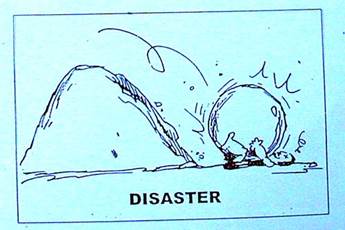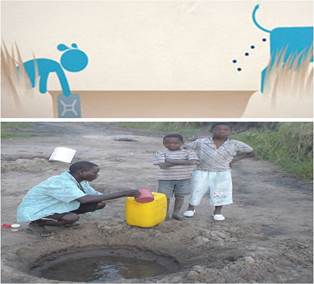Disaster Risk Management (DRM)
Definition of DRM and Covaca Terms and Concepts
|
DRM Terms and Concepts Defibed |
||
|
DISASTER
Disaster = Hazard x Vulnerability |
|
|
|
Disaster occur due to human interaction with hazardous circumstances A situation only becomes a disaster due to human interaction -A disaster is a function of the risk process resulting from the combination of Hazards, Condition of Vulnerability and Insufficient capacity or measures
Vulnerability Capacity
|
|
|
|
VULNERABILITY
|
|
|
|
The degree to which an area, people, physical structures or economic assets are exposed or susceptible to potential loss, injury or damage caused by the impact of a hazard. Vulnerability is a situation where a person is prone to deprivation or weakened to a situation whereby they cannot protect themselves or cannot enjoy benefits, which they naturally should enjoy |
|
|
|
HAZARD “trigger event”
A dangerous event/human activity or condition that may cause loss of life, injury or other health impacts, property damage, loss of livelihood and services, social disruption and environmental damage.(natural, technological and environmental degradation) |
|
|
|
HAZARD “trigger event” A potentially damaging physical event, phenomenon or human activity that may cause the loss of life or injury, property damage, social and economic disruption or environmental degradation
|
||
|
DISASTER RISK
The probability of meeting a danger or suffering/harm
Disaster Risk = Hazard (h) x Vulnerability (v) / Capacity (c)
|
|
|
|
DISASTER RISK
|
|
|
|
CAPACITY
|
|
|
|
Warning Signs/Signals |
Scientific and indigenous indicators that a hazard is likely to happen |
|
|
Disaster Risk Reduction |
Measures taken in order to curb disaster losses, through minimizing the effects of hazards, reducing exposure and susceptibility and enhancing coping and adaptive capacity. Good disaster risk reduction also continues after a disaster, building resilience to future hazards. This is the concept and practice of reducing disaster risks through systematic efforts to analyze and manage the casual factors of disasters, which include reducing exposure to hazard, lessened vulnerability of people and property, wise management of land and the environment and improved preparedness for adverse effects |
|
|
|
|
|


 Hazard
Hazard






